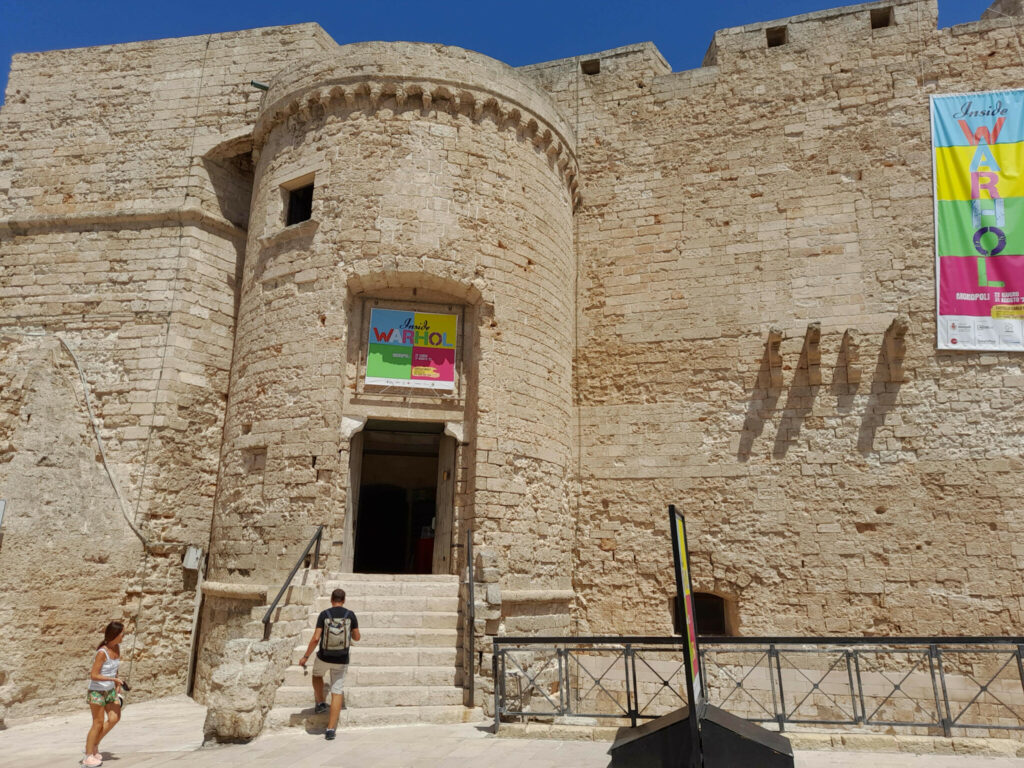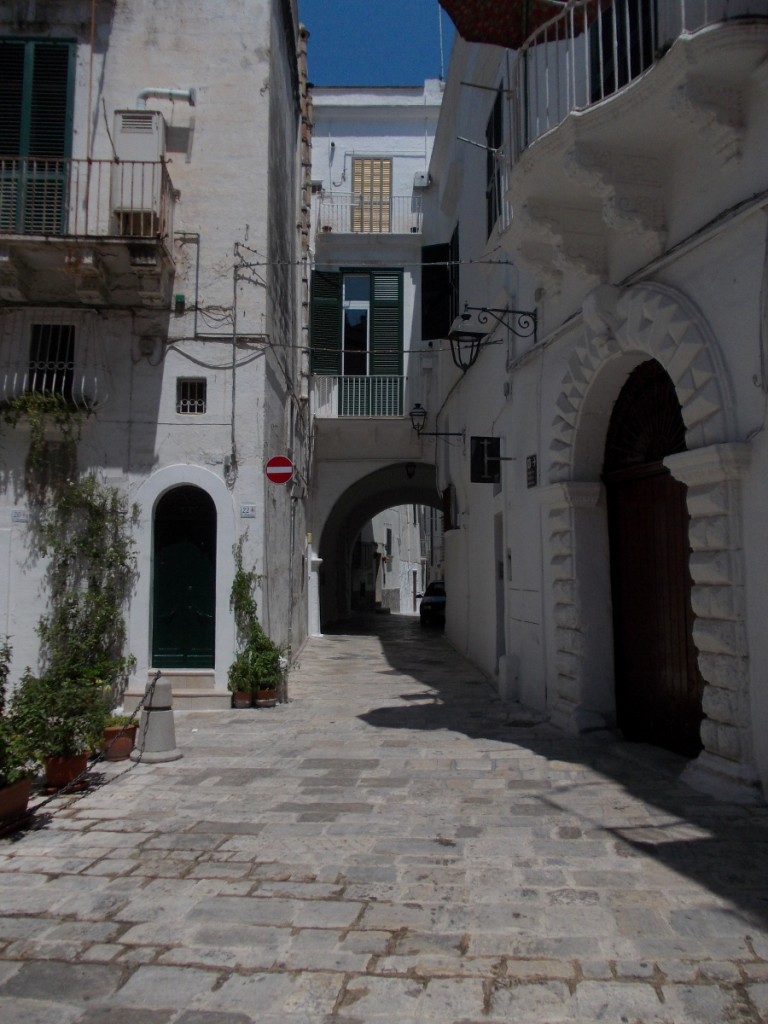




Originally developing as a Messapian fortified settlement in the 5th Century BC, Monopoli was a key stop off point on the Via Traiana section of the Appian Way during Roman times. Following periods under the control of Byzantines, Normans and Hohenstaufens the town became an important trading port under Venetian control during the 15th and 16th Centuries - this attracted the attention of pirates which resulted in the strong town defences still visible around the harbour.
Today, Monopoli is a sizeable town (population about 50,000) with significant industrial activities. On first approaching the town from pretty much any direction it doesn't look like much of a place to hang around in for too long, but take our word for it, it is worth persevering to find the old town, picturesque harbour, its significant castle and adjoining ramparts overlooking the sea.
Parking can be tricky. There are quite a lot of spaces on streets around the old town, but you may have to park some distance away in busy times. Rail access is easy. Monopoli is an important station for both regional and log distance trains; just head pretty well straight ahead from the station, it is about a 10 minute walk to the old town.
Walk to the old harbour through an archway next to the Piazza Garibaldi, follow this round to the castle, then walk along a promenade overlooking the sea, then wander through the streets of the old city back to where you started from. One of the very best 30 minutes or so you will spend anywhere in Italy!
The centro storico is a distinct entity within the town. It is flat (a change from Ostuni!). A series of narrow but elegant streets link small piazzas, with buildings reflecting the long Spanish influence on the town. If you are interested in churches, then Monopoli is a place for you - there are over 20 in the centro storico, dating from the tenth to the nineteenth century, including a rupestrian (underground) church and a couple of crypts.
The sea is on three sides, with a harbour area dominated by the pentagonal shaped castle. Wandering through the streets you are constantly coming back to the waterside. There is a tourist office at the entrance to the centro storico on Via Garibaldi. This organises guided tours of various sorts, but there is a well marked "tourist trail" to follow on foot.
The largest open space in the centro storico is Largo Palmieri, which is dominated by the Palazzo Palmieri, the home of an aristocratic family who owned the building until 1921. However, the most attractive space and focus of popular activity is Piazza Garibaldi, which is roughly triangular in shape, enclosed by a series of buildings of interest, enlivened by trees including colourful oleanders. The piazza is lined by a number of small bars and restaurants which improve its atmosphere rather than detract from it. There are opportunities to eat and drink in various other parts of the centre as well, the experience of family and friends over many visits has always been positive.
The castle of Monopoli was constructed by Charles V of Spain in the late 1500's, on the site of a previous fortress built by Frederick II in this key location guarding the harbour. It had the pentagonal structure typical of Spanish empire castles of the time. In 1660 the rectangular keep was added, and it is this which is the most obvious feature today.


After its defensive role lapsed, the castle became the residence of local nobility, and then for many years until 1969 it was used as a prison. Following major renovation works, it is now a historic attraction and conference/exhibition venue. It is partially open (free) to the public, but the best way to see it is if there is an exhibition on. The photographs shown here were taken when we made a family visit to an exhibition of works by Andy Warhol in August 2022.


Beyond the castle there is a rampart walk overlooking the sea, this leads into an area just inside the ancient walls and back into the centro storico.





